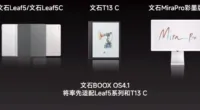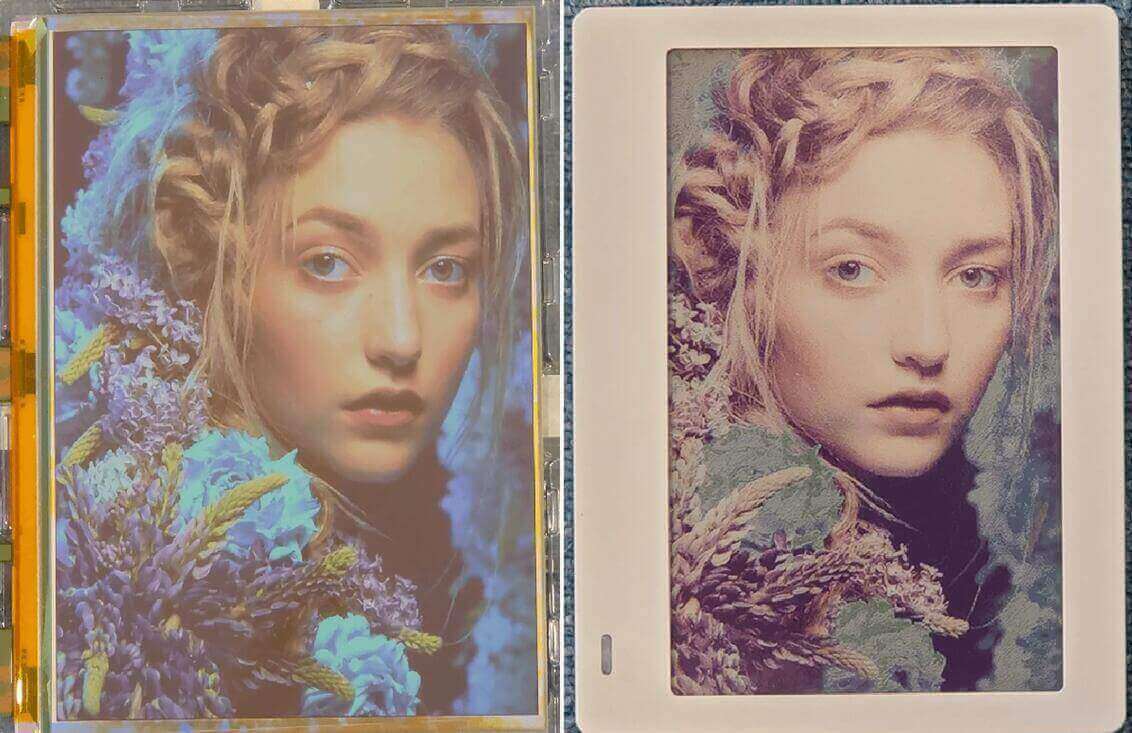While we have had E Ink e-paper display for a while now, it is the color e-paper display that has turned out to be the newest trend, captivating manufacturers and buyers around the world. Much like their monochrome counterpart, the color e-paper displays also offer excellent sunlight visibility and require ultra-low power for their operation. As Iris-Opt mentioned, their ability to render vibrant images has made them the number one choice for such applications as street signage, advertising, smart retailing, and such in several parts of the world.
This has been largely due to the ability of the color e-paper displays to show content in vibrant colors that mimic paper posters or conventional displays. Here, we pitch the E Ink ACeP Gallery Palette against cholesteric liquid crystal (ChLCD) from IRIS Optronics to find out which trumps the other in its ability to render color images in all their vibrancy.
How E Ink ACeP Gallery Palette Works
However, before we get to that, here is a brief discourse on the way the two display technologies work. Based on the E Ink ACeP (Advanced Color e-paper) technology, the display comprises microcups filled with four ink particles – yellow, cyan, magenta, and white. It is the combination of these particles that generates the color effect depending on the voltage applied. In all, there are seven colors generated: black, white, red, yellow, blue, green, and orange.
How Cholesteric Liquid Crystal Display (ChLCD) Works
Cholesteric liquid crystal (ChLCD) e-paper display, on the other hand, comes with a three-layer structure. Each of the layers is capable of displaying a distinct color – red, green, and blue, respectively. The liquid crystal particles are lined up perfectly in the planar state according to the wavelengths of light. This, in turn, leads to the formation of distinct color effects.
The liquid crystal particles are also lined up in a manner so that there is enough light passing through to make the colors underneath perfectly visible. Each of the three RGB liquid crystal layers can be adjusted independently to create different color effects. This happens to be the central principle of ChLCD, reproducing 16 million colors with the color rendering capacity matched by the likes of LCD panels.
How ACeP Gallery Palette and ChLCD Stack up
Now that we know what the two display technologies are like, it is time to pitch one against the other. The testing is carried out in four different categories.
> Red, green, blue, cyan, magenta, and yellow shift across 16 levels to white or black. This is to show how consistent the color transitions are in full-color technology.
> Orange, purple, blue, and green mixed together will help to determine the gradient effects of full-color technology in changing colors.
> A scenic image is used to find out how the two display technologies fare when it comes to showing the picture of a landscape.
> A portrait to show how the display technology fares when showing portrait shots.
With the E Ink ACeP Gallery Palette, there were 12 clear color divisions evident when displaying 16 levels of grayscales. The display, though, was found severely lacking when showing certain colors. For instance, cyan and purple were not rendered in the correct form and looked green and purple, respectively. Further, the display also looked grainy as there wasn’t much use of white ink for filling up the gaps in the color scale during the transitions.
Things are a lot better with the ChLCD e-paper display, which is able to show red, green, blue, cyan, magenta, and yellow in all their true colors.
It is also a bit of a compromise when it is about showing the gradient of orange, purple, blue, and green with ACEP Gallery Palette display tech. With limited color options, white is used to fill in the gaps, which makes the palette have a less comprehensive color gamut. Bright greens and blues were missing. So, when it comes to showing mountains or lush greenery in a landscape scene, the Gallery Palette could at best show a muted effect due to the clear lack of colors. Overall, it had the look of a vintage color photograph.
With the support of 16.78 million colors, things are a lot better with the ChLCD display. Each color was amply represented, which made the same image have a more vibrant and richer look to it.
The limited number of colors was also evident in portrait shots. The skin tones were not rendered in the correct form in the Gallery Palette due to the lack of enough colors. The facial shadows too were not depicted in the correct form, which made the images to have a flat look to it.
Needless to say, with millions of colors at its disposal, the portrait looked much better and realistic on the ChLCD panel. Be it individual colors, skin tones, or color depth, everything looked more complete and beautiful on the ChLCD.
So, which comes out on top? Its ChLCD e-paper display, of course which makes it more well-suited for use as a digital signage solution compared to ACeP Gallery Palette.
With a keen interest in tech, I make it a point to keep myself updated on the latest developments in technology and gadgets. That includes smartphones or tablet devices but stretches to even AI and self-driven automobiles, the latter being my latest fad. Besides writing, I like watching videos, reading, listening to music, or experimenting with different recipes. The motion picture is another aspect that interests me a lot, and I'll likely make a film sometime in the future.

